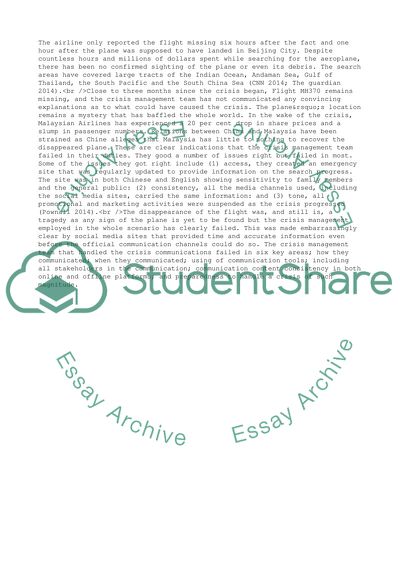Cite this document
(Analysis of the Crisis Management of Malaysia Flight MH370 Disaster Essay Example | Topics and Well Written Essays - 1500 words - 1, n.d.)
Analysis of the Crisis Management of Malaysia Flight MH370 Disaster Essay Example | Topics and Well Written Essays - 1500 words - 1. https://studentshare.org/management/1830744-final-essay
Analysis of the Crisis Management of Malaysia Flight MH370 Disaster Essay Example | Topics and Well Written Essays - 1500 words - 1. https://studentshare.org/management/1830744-final-essay
(Analysis of the Crisis Management of Malaysia Flight MH370 Disaster Essay Example | Topics and Well Written Essays - 1500 Words - 1)
Analysis of the Crisis Management of Malaysia Flight MH370 Disaster Essay Example | Topics and Well Written Essays - 1500 Words - 1. https://studentshare.org/management/1830744-final-essay.
Analysis of the Crisis Management of Malaysia Flight MH370 Disaster Essay Example | Topics and Well Written Essays - 1500 Words - 1. https://studentshare.org/management/1830744-final-essay.
“Analysis of the Crisis Management of Malaysia Flight MH370 Disaster Essay Example | Topics and Well Written Essays - 1500 Words - 1”. https://studentshare.org/management/1830744-final-essay.


